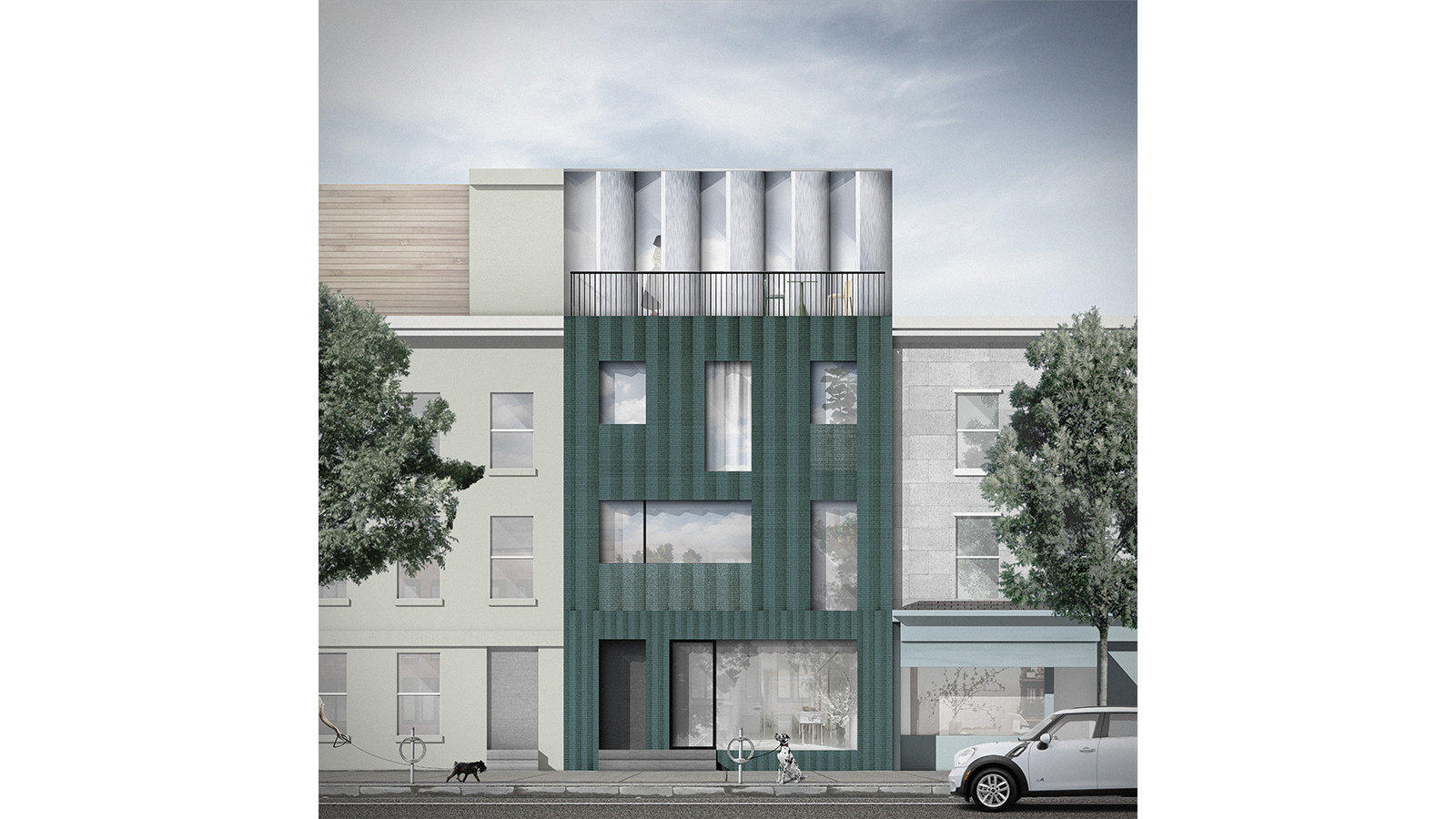
New York, New York, USA
2020, Ongoing
Client: Private
Team: Tei Carpenter, Marylynn Antaki, Ian Cheung
Crown House is a mixed use project that is organized with a vertical concealed thick wall that incorporates a transformable millwork system that can be activated throughout the day and night. Its exterior is designed with a perforated and pleated facade with reflective penthouse crown at the top which dissolves into the sky. It is conceived through a series of “spatial clock” drawings that establish how the residents (here, a working parent) spend time over the course of a day. In these drawings, time is tied to space in a 24-hour clock to re-evaluate how the domestic sphere has fundamentally shifted during and after the COVID-19 pandemic.
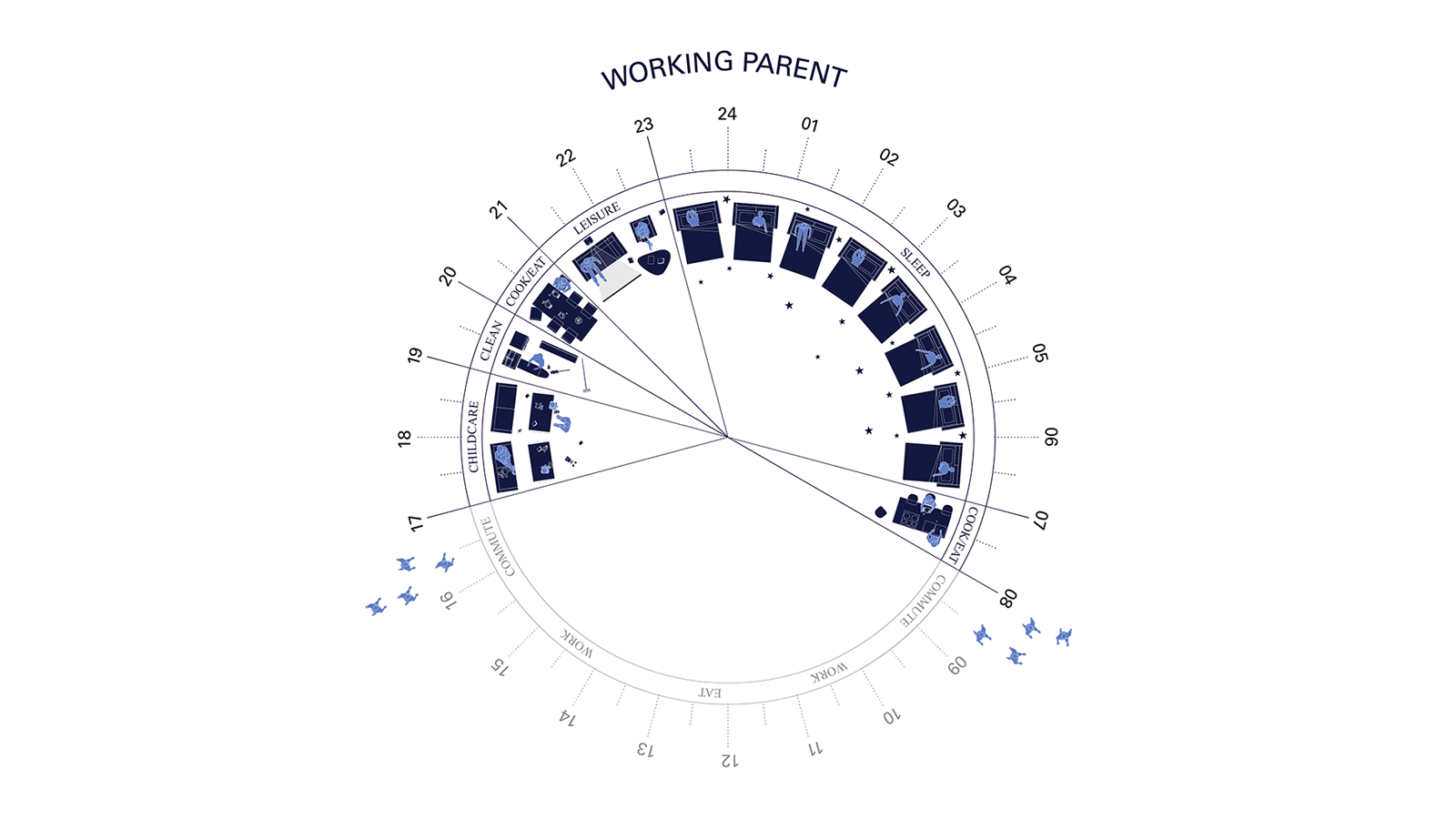
New York, New York, USA
2020, Ongoing
Client: Private
Team: Tei Carpenter, Marylynn Antaki, Ian Cheung
Crown House is a mixed use project that is organized with a vertical concealed thick wall that incorporates a transformable millwork system that can be activated throughout the day and night. Its exterior is designed with a perforated and pleated facade with reflective penthouse crown at the top which dissolves into the sky. It is conceived through a series of “spatial clock” drawings that establish how the residents (here, a working parent) spend time over the course of a day. In these drawings, time is tied to space in a 24-hour clock to re-evaluate how the domestic sphere has fundamentally shifted during and after the COVID-19 pandemic.
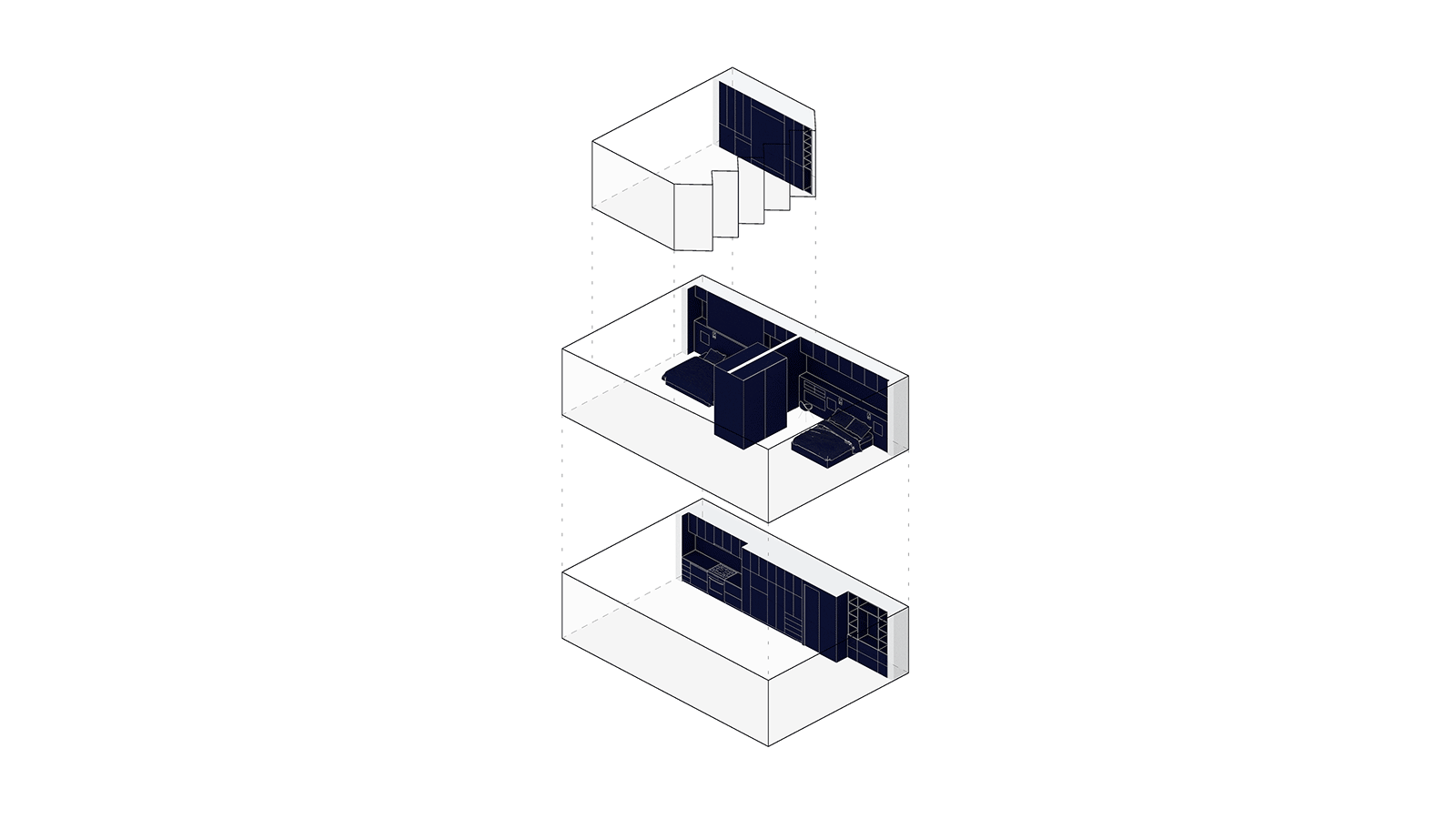
New York, New York, USA
2020, Ongoing
Client: Private
Team: Tei Carpenter, Marylynn Antaki, Ian Cheung
Crown House is a mixed use project that is organized with a vertical concealed thick wall that incorporates a transformable millwork system that can be activated throughout the day and night. Its exterior is designed with a perforated and pleated facade with reflective penthouse crown at the top which dissolves into the sky. It is conceived through a series of “spatial clock” drawings that establish how the residents (here, a working parent) spend time over the course of a day. In these drawings, time is tied to space in a 24-hour clock to re-evaluate how the domestic sphere has fundamentally shifted during and after the COVID-19 pandemic.
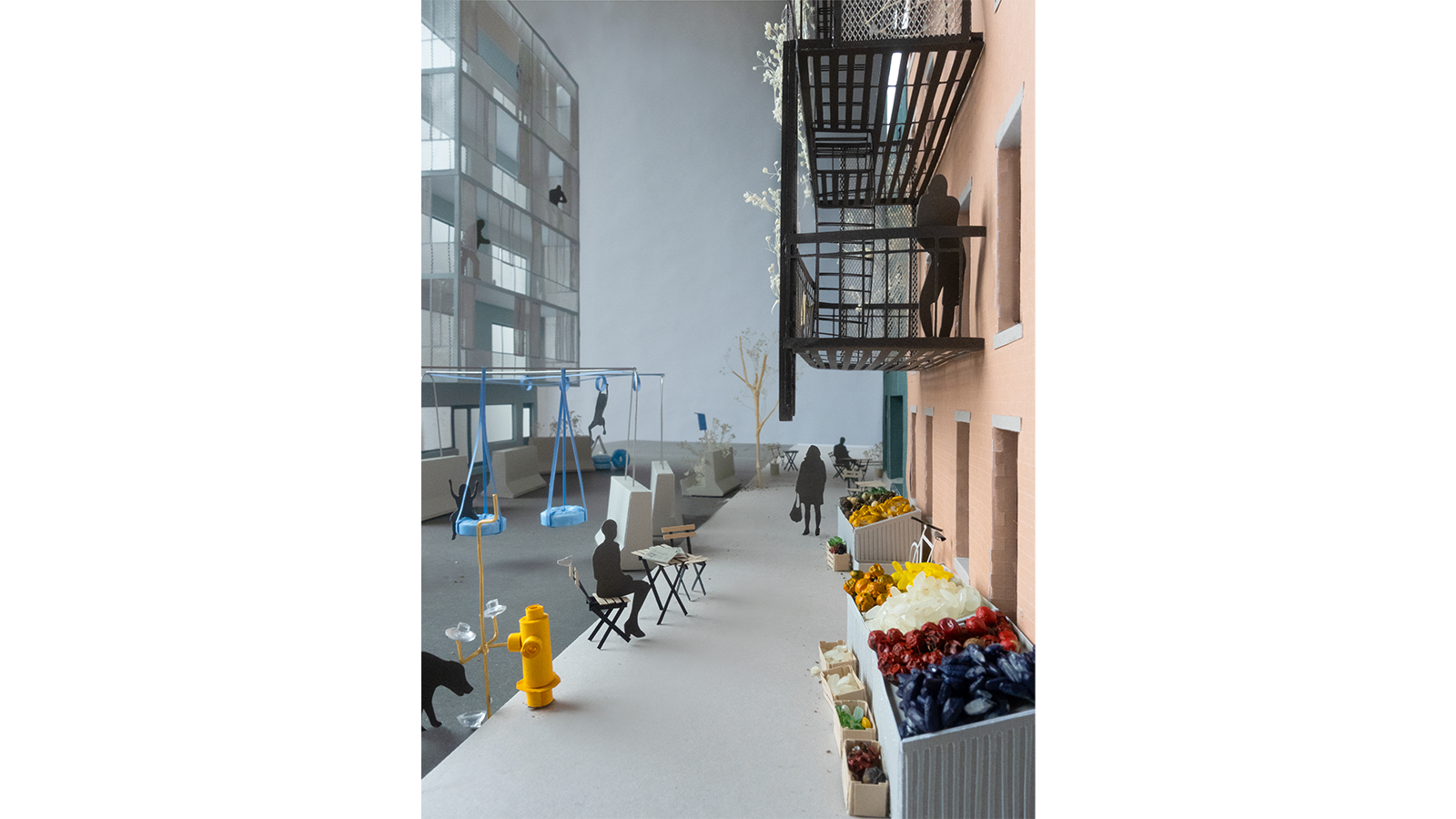
New York, New York, USA
2021, Digital Installation
Client: The Architectural League of New York
Team: Tei Carpenter, Ian Cheung, Erin Jeong, Erik Jinmatsu Roberson
Commissioned for the League Prize 2021 installation by the Architectural League of New York,
Street Remodel collects eight of the studio’s recent projects in order to explore and bring forth latent potentials of everyday infrastructure and daily life to reimagine the civic capacity of the street. It explores often-overlooked infrastructures as opportunities to imbue the street with pluralistic capacities, not by building anew but rather by remodeling the familiar. The installation features New Public Hydrant, Open Barriers, Crown House and Balcony Retrofits. For more information on the project check out the website
here.
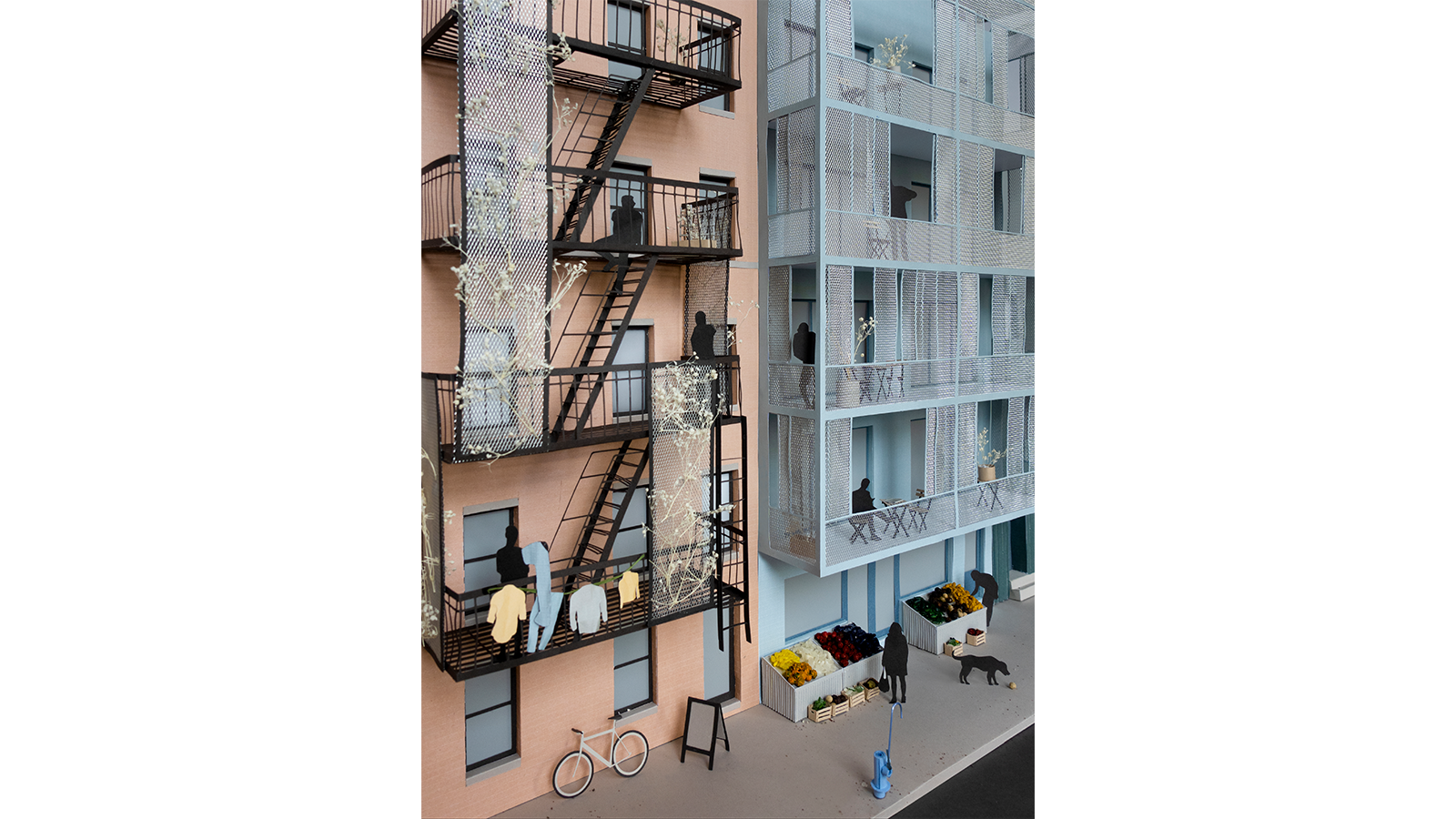
New York, New York, USA
2021, Digital Installation
Client: The Architectural League of New York
Team: Tei Carpenter, Ian Cheung, Erin Jeong, Erik Jinmatsu Roberson
Commissioned for the League Prize 2021 installation by the Architectural League of New York,
Street Remodel collects eight of the studio’s recent projects in order to explore and bring forth latent potentials of everyday infrastructure and daily life to reimagine the civic capacity of the street. It explores often-overlooked infrastructures as opportunities to imbue the street with pluralistic capacities, not by building anew but rather by remodeling the familiar. The installation features New Public Hydrant, Open Barriers, Crown House and Balcony Retrofits. For more information on the project check out the website
here.

New York, New York, USA
2021, Digital Installation
Client: The Architectural League of New York
Team: Tei Carpenter, Ian Cheung, Erin Jeong, Erik Jinmatsu Roberson
Commissioned for the League Prize 2021 installation by the Architectural League of New York,
Street Remodel collects eight of the studio’s recent projects in order to explore and bring forth latent potentials of everyday infrastructure and daily life to reimagine the civic capacity of the street. It explores often-overlooked infrastructures as opportunities to imbue the street with pluralistic capacities, not by building anew but rather by remodeling the familiar. The installation features New Public Hydrant, Open Barriers, Crown House and Balcony Retrofits. For more information on the project check out the website
here.
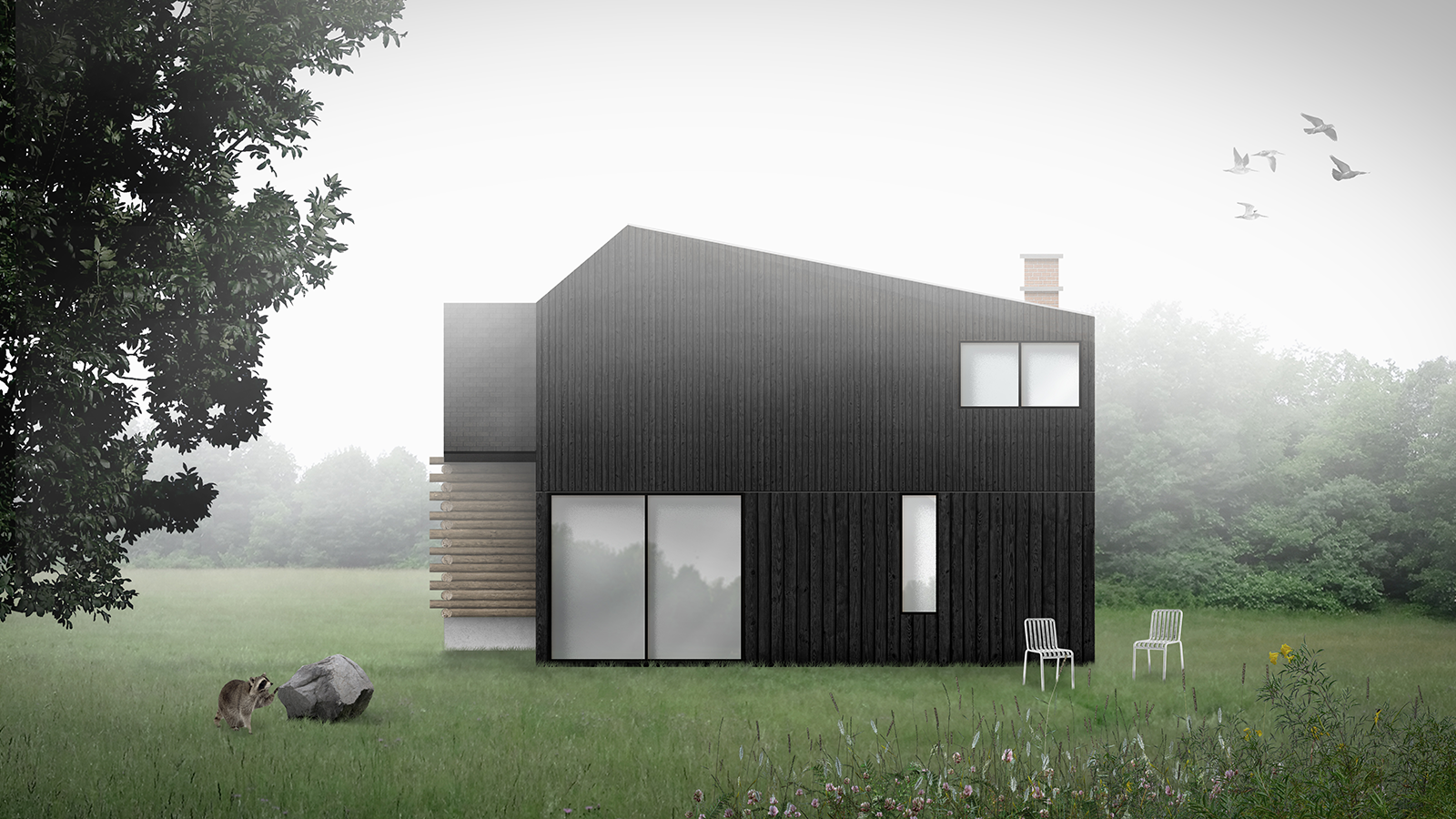
upstate new york addition and banya
show text
New York, USA
2020, In Progress
Client: Private
Team: Tei Carpenter, Marylynn Antaki, Ian Cheung, Tanya Maneeintr
An addition and banya with sauna and outdoor plunge pool designed to connect the residents directly to the wilderness, working with existing topography and vernacular building elements. More information and photographs coming soon.
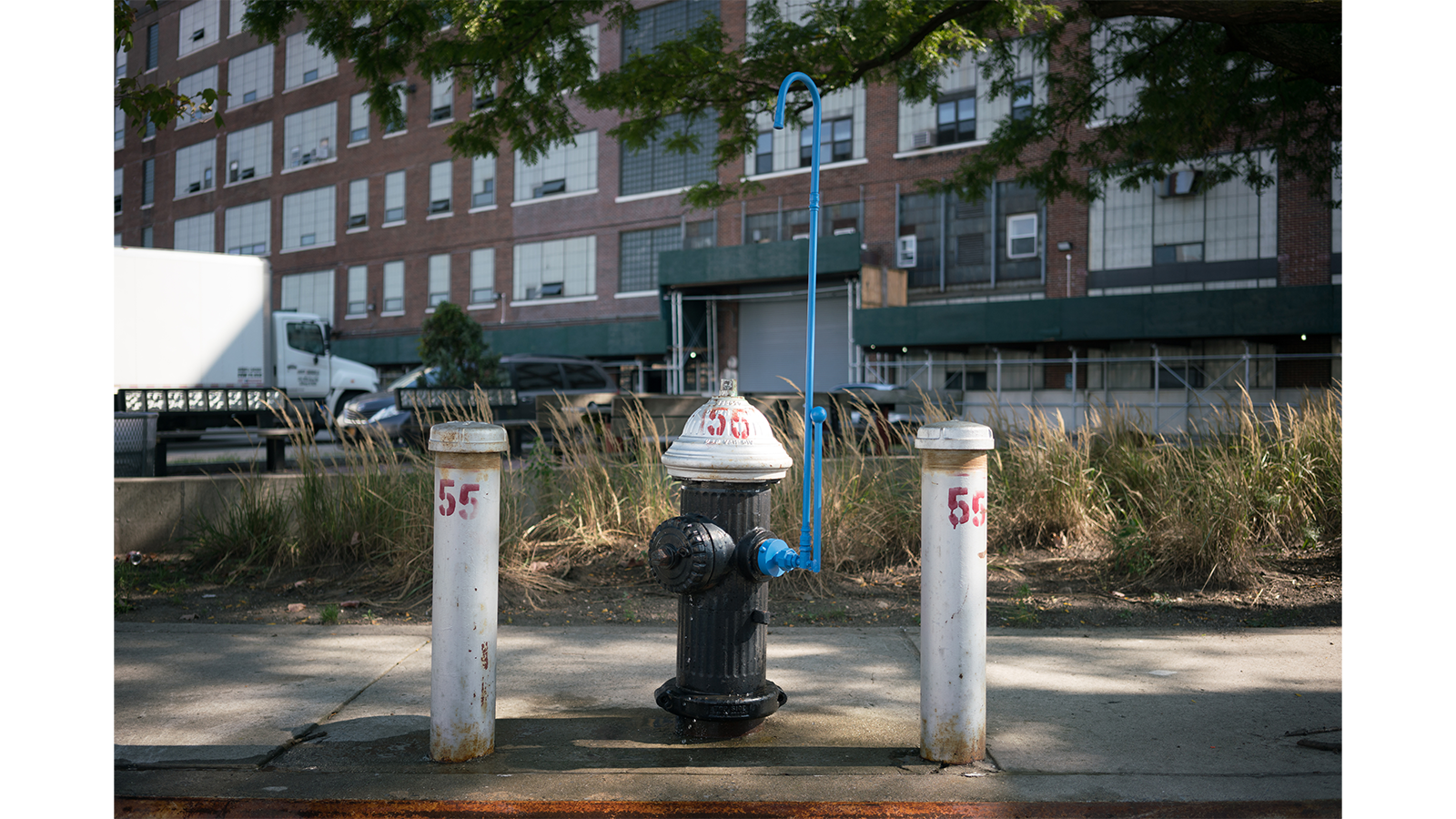
new public hydrant
show text
New York, USA
2018, Commissioned Installation
Client: BMW Mini
Team: Tei Carpenter, Chris Woebken, Arianna Deane, Ashely Kuo, Zeynep Ugur
New Public Hydrant engages with the fire hydrant as a small-scale water infrastructure in New York City to inspire surprising new forms of public interactions surrounding our emergency infrastructure and the city’s high quality drinking water supply. The installation includes three “hydrant hacks”:
Hydrants for All is a multi-species fountain,
Hydrant on Tap is a bottle fill station and
Hydration Space is an immersive microclimate sprinkler. Commissioned by BMW Mini for A/D/O’s Water Futures research program curated by Jane Withers. For more information check out the essay “The New Public Water” on
Urban Omnibus.
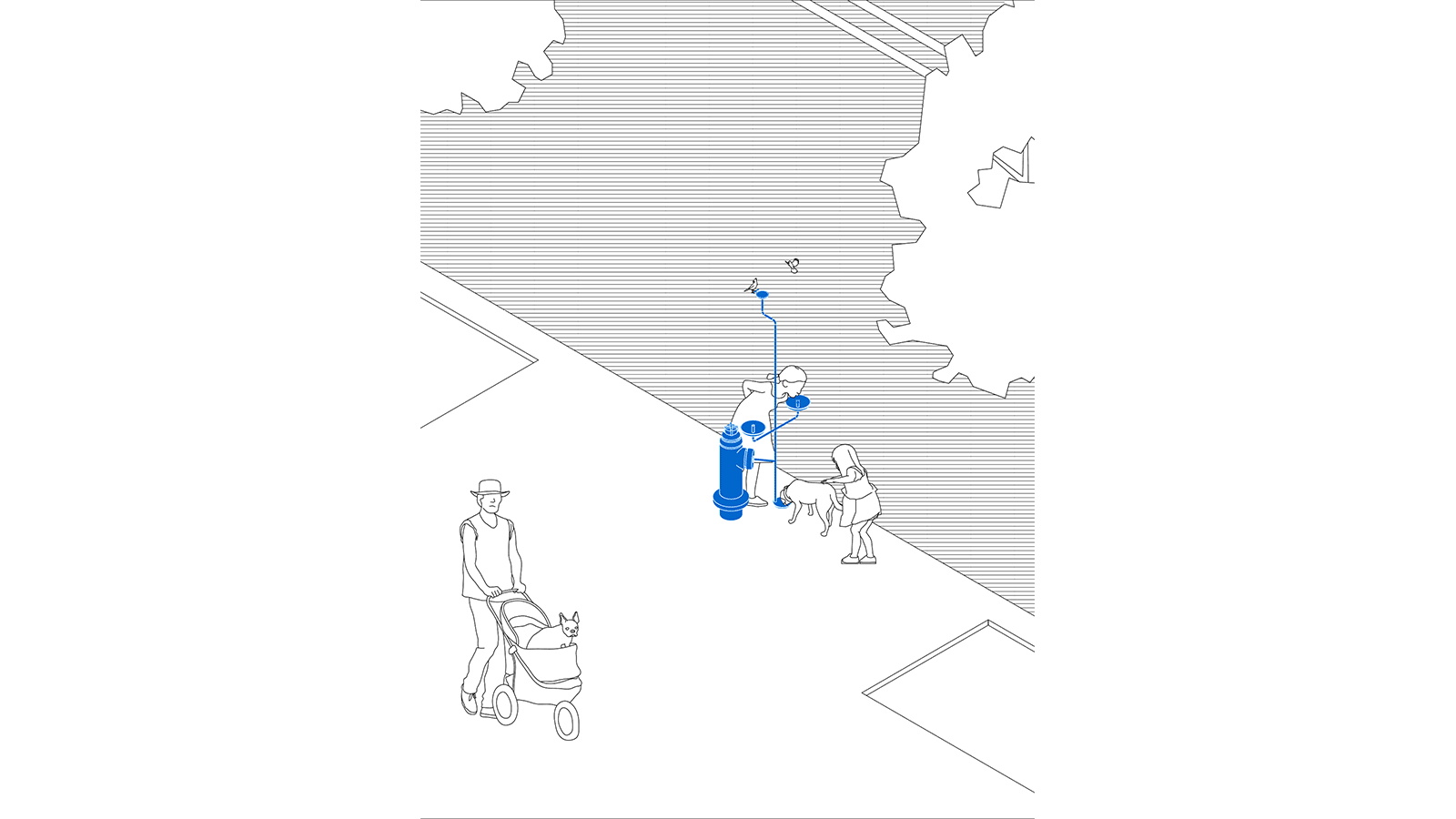
new public hydrant
show text
New York, USA
2018, Commissioned Installation
Client: BMW Mini
Team: Tei Carpenter, Chris Woebken, Arianna Deane, Ashely Kuo, Zeynep Ugur
New Public Hydrant engages with the fire hydrant as a small-scale water infrastructure in New York City to inspire surprising new forms of public interactions surrounding our emergency infrastructure and the city’s high quality drinking water supply. The installation includes three “hydrant hacks”:
Hydrants for All is a multi-species fountain,
Hydrant on Tap is a bottle fill station and
Hydration Space is an immersive microclimate sprinkler. Commissioned by BMW Mini for A/D/O’s Water Futures research program curated by Jane Withers. For more information check out the essay “The New Public Water” on
Urban Omnibus.

new public hydrant
show text
New York, USA
2018, Commissioned Installation
Client: BMW Mini
Team: Tei Carpenter, Chris Woebken, Arianna Deane, Ashely Kuo, Zeynep Ugur
New Public Hydrant engages with the fire hydrant as a small-scale water infrastructure in New York City to inspire surprising new forms of public interactions surrounding our emergency infrastructure and the city’s high quality drinking water supply. The installation includes three “hydrant hacks”:
Hydrants for All is a multi-species fountain,
Hydrant on Tap is a bottle fill station and
Hydration Space is an immersive microclimate sprinkler. Commissioned by BMW Mini for A/D/O’s Water Futures research program curated by Jane Withers. For more information check out the essay “The New Public Water” on
Urban Omnibus.

hamilton gears covered park
show text
Toronto, Canada
2020, Proposal
Team: Tei Carpenter, Jenna Gauder, Keenan Ngo
Hamilton Gears Covered Park intervenes in an existing vacant industrial building to propose a covered park typology that revalues construction and demolition waste. Parts of the building are designed to be intentionally subtracted and recycled while new elements are reclaimed regionally to offer new, public consciousness to waste materials and offer a year round public space.
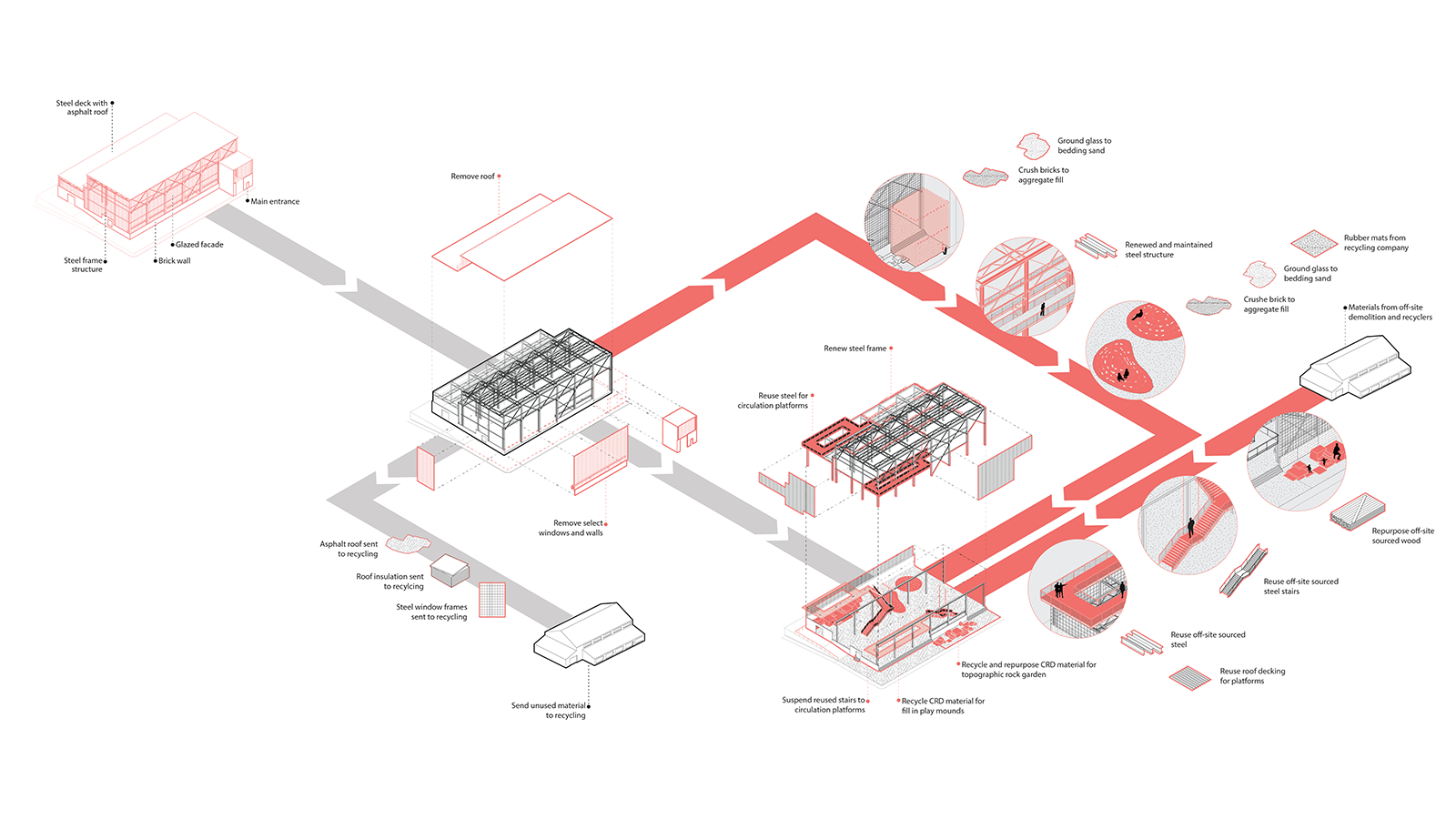
hamilton gears covered park
show text
Toronto, Canada
2020, Proposal
Team: Tei Carpenter, Jenna Gauder, Keenan Ngo
Hamilton Gears Covered Park intervenes in an existing vacant industrial building to propose a covered park typology that revalues construction and demolition waste. Parts of the building are designed to be intentionally subtracted and recycled while new elements are reclaimed regionally to offer new, public consciousness to waste materials and offer a year round public space.

hamilton gears covered park
show text
Toronto, Canada
2020, Proposal
Team: Tei Carpenter, Jenna Gauder, Keenan Ngo
Hamilton Gears Covered Park intervenes in an existing vacant industrial building to propose a covered park typology that revalues construction and demolition waste. Parts of the building are designed to be intentionally subtracted and recycled while new elements are reclaimed regionally to offer new, public consciousness to waste materials and offer a year round public space.

model projections
show text
Arthur Ross Architecture Gallery, Columbia GSAPP, New York, New York, USA
October 4—December 15 2018, Exhibition Design
Design Team: Tei Carpenter, Minjae Kim, Sadie Dempsey
Curatorial Team: Jennifer Gray, Irene Sunwoo, Tiffany Lambert
Text: Columbia GSAPP Exhibitions
Photography: © James Ewing
Model Projections investigates the complex pathways between architecture and its representations through an examination of the practice of model making. It explores the ephemeral registers of architectural production, revealing the model itself as a site of collaboration, negotiation, and speculation—not unlike the full-scale building that it anticipated. The exhibition design is an immersive installation and display system that uses off-the-shelf materials—drywall fragments, exposed metal studs—to evoke an architectural work-in-progress. Embracing the artifice and provisional nature of models, the exhibition design oscillates between multiple scales, intertwining the materials and methods of model making and architectural construction. Editor’s Pick for Exhibition Design from the Architects’ Newspaper 2019 Best of Design Awards.

model projections
show text
Arthur Ross Architecture Gallery, Columbia GSAPP, New York, New York, USA
October 4—December 15 2018, Exhibition Design
Design Team: Tei Carpenter, Minjae Kim, Sadie Dempsey
Curatorial Team: Jennifer Gray, Irene Sunwoo, Tiffany Lambert
Text: Columbia GSAPP Exhibitions
Photography: © James Ewing
Model Projections investigates the complex pathways between architecture and its representations through an examination of the practice of model making. It explores the ephemeral registers of architectural production, revealing the model itself as a site of collaboration, negotiation, and speculation—not unlike the full-scale building that it anticipated. The exhibition design is an immersive installation and display system that uses off-the-shelf materials—drywall fragments, exposed metal studs—to evoke an architectural work-in-progress. Embracing the artifice and provisional nature of models, the exhibition design oscillates between multiple scales, intertwining the materials and methods of model making and architectural construction. Editor’s Pick for Exhibition Design from the Architects’ Newspaper 2019 Best of Design Awards.

model projections
show text
Arthur Ross Architecture Gallery, Columbia GSAPP, New York, New York, USA
October 4—December 15 2018, Exhibition Design
Design Team: Tei Carpenter, Minjae Kim, Sadie Dempsey
Curatorial Team: Jennifer Gray, Irene Sunwoo, Tiffany Lambert
Text: Columbia GSAPP Exhibitions
Photography: © James Ewing
Model Projections investigates the complex pathways between architecture and its representations through an examination of the practice of model making. It explores the ephemeral registers of architectural production, revealing the model itself as a site of collaboration, negotiation, and speculation—not unlike the full-scale building that it anticipated. The exhibition design is an immersive installation and display system that uses off-the-shelf materials—drywall fragments, exposed metal studs—to evoke an architectural work-in-progress. Embracing the artifice and provisional nature of models, the exhibition design oscillates between multiple scales, intertwining the materials and methods of model making and architectural construction. Editor’s Pick for Exhibition Design from the Architects’ Newspaper 2019 Best of Design Awards.
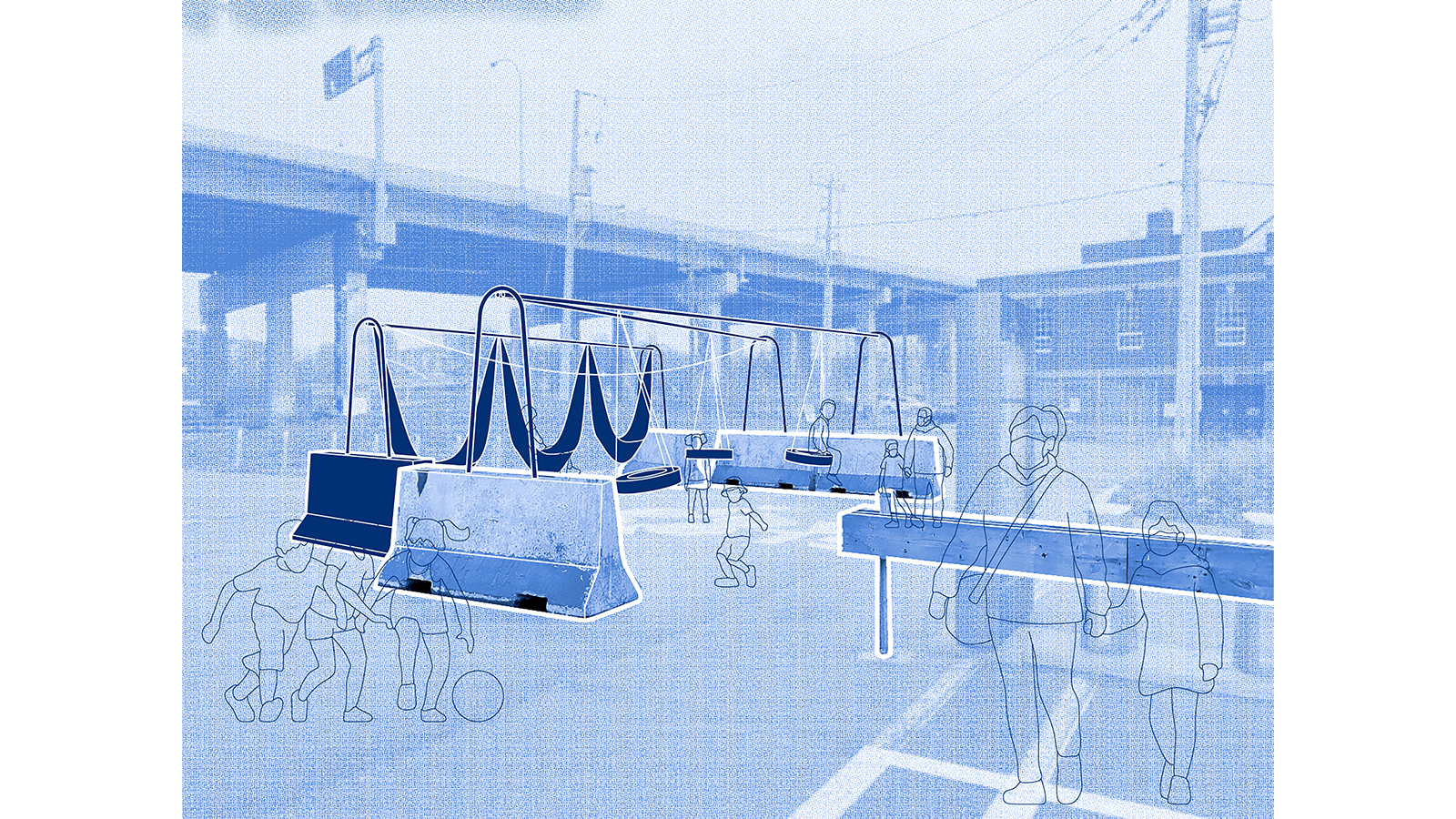
Toronto, Canada
2021, Commissioned Proposal
Client: The Bentway
Team: Tei Carpenter and Ian Cheung
Open Barriers reexamines the concrete Jersey barrier as an omnipresent safety infrastructure to explore issues of securitization and accessibility. Two prototypes redesign the barriers to work double duty towards a new public value. “Play Stop” uses the ballast of the barriers to support flexible and repeatable play structures that shift the barriers as an edge condition to an occupiable zone. “Pollinator Rest Stop” is a multispecies approach to urban design that introduces a new planter profile to the inside of the barrier to create seasonal habitats for local pollinators and a rest stop for butterflies on their migration path. The project is part of The Bentway’s
Safe in Public Space initiative to broaden the definition of public safety in an effort to build a new shared social contract for public space.

Toronto, Canada
2021, Commissioned Proposal
Client: The Bentway
Team: Tei Carpenter and Ian Cheung
Open Barriers reexamines the concrete Jersey barrier as an omnipresent safety infrastructure to explore issues of securitization and accessibility. Two prototypes redesign the barriers to work double duty towards a new public value. “Play Stop” uses the ballast of the barriers to support flexible and repeatable play structures that shift the barriers as an edge condition to an occupiable zone. “Pollinator Rest Stop” is a multispecies approach to urban design that introduces a new planter profile to the inside of the barrier to create seasonal habitats for local pollinators and a rest stop for butterflies on their migration path. The project is part of The Bentway’s
Safe in Public Space initiative to broaden the definition of public safety in an effort to build a new shared social contract for public space.
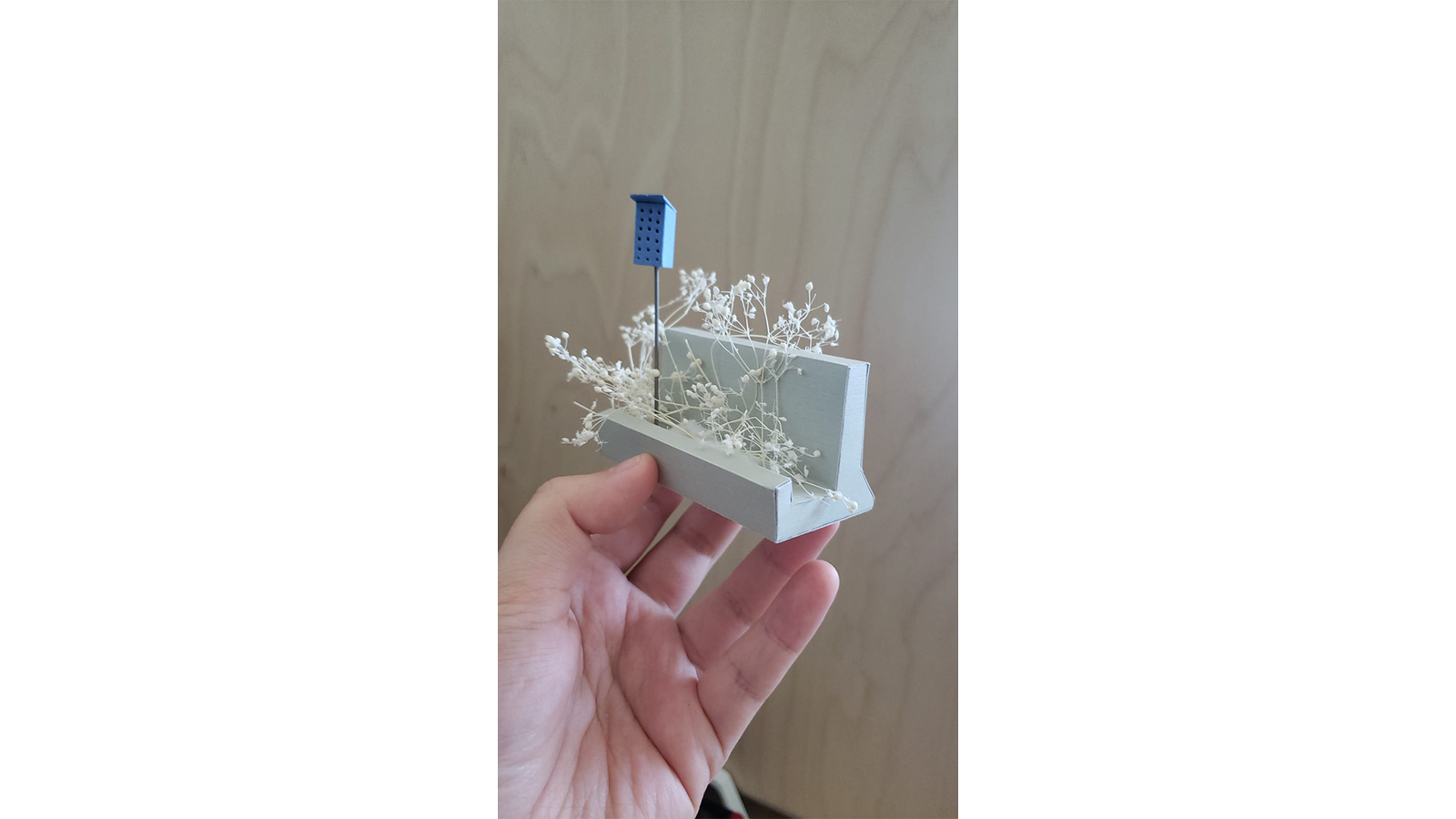
Toronto, Canada
2021, Commissioned Proposal
Client: The Bentway
Team: Tei Carpenter and Ian Cheung
Open Barriers reexamines the concrete Jersey barrier as an omnipresent safety infrastructure to explore issues of securitization and accessibility. Two prototypes redesign the barriers to work double duty towards a new public value. “Play Stop” uses the ballast of the barriers to support flexible and repeatable play structures that shift the barriers as an edge condition to an occupiable zone. “Pollinator Rest Stop” is a multispecies approach to urban design that introduces a new planter profile to the inside of the barrier to create seasonal habitats for local pollinators and a rest stop for butterflies on their migration path. The project is part of The Bentway’s
Safe in Public Space initiative to broaden the definition of public safety in an effort to build a new shared social contract for public space.

balcony retrofits
show text
new york, new york, USA
2020, research
Tei Carpenter, Marylynn Antaki, Erik Jinmatsu Roberson, Serena Zhang
Balcony Retrofits is an ongoing research project into the space in between the building exterior and the street. It reflects on the New York State Tenement House Act when fire escapes were retrofitted onto buildings due to poor ventilation to consider new ways to democratically provide outdoor space to more people. “Green Escapes” is a series of mesh panels that produce a layer of privacy for prolonged occupation and a support for a vertical garden across the building facade. “Operable Thresholds” are building retrofits that offer operable panels for user customization of ventilation, privacy and sun infiltration.

balcony retrofits
show text
new york, new york, USA
2020, research
Tei Carpenter, Marylynn Antaki, Erik Jinmatsu Roberson, Serena Zhang
Balcony Retrofits is an ongoing research project into the space in between the building exterior and the street. It reflects on the New York State Tenement House Act when fire escapes were retrofitted onto buildings due to poor ventilation to consider new ways to democratically provide outdoor space to more people. “Green Escapes” is a series of mesh panels that produce a layer of privacy for prolonged occupation and a support for a vertical garden across the building facade. “Operable Thresholds” are building retrofits that offer operable panels for user customization of ventilation, privacy and sun infiltration.
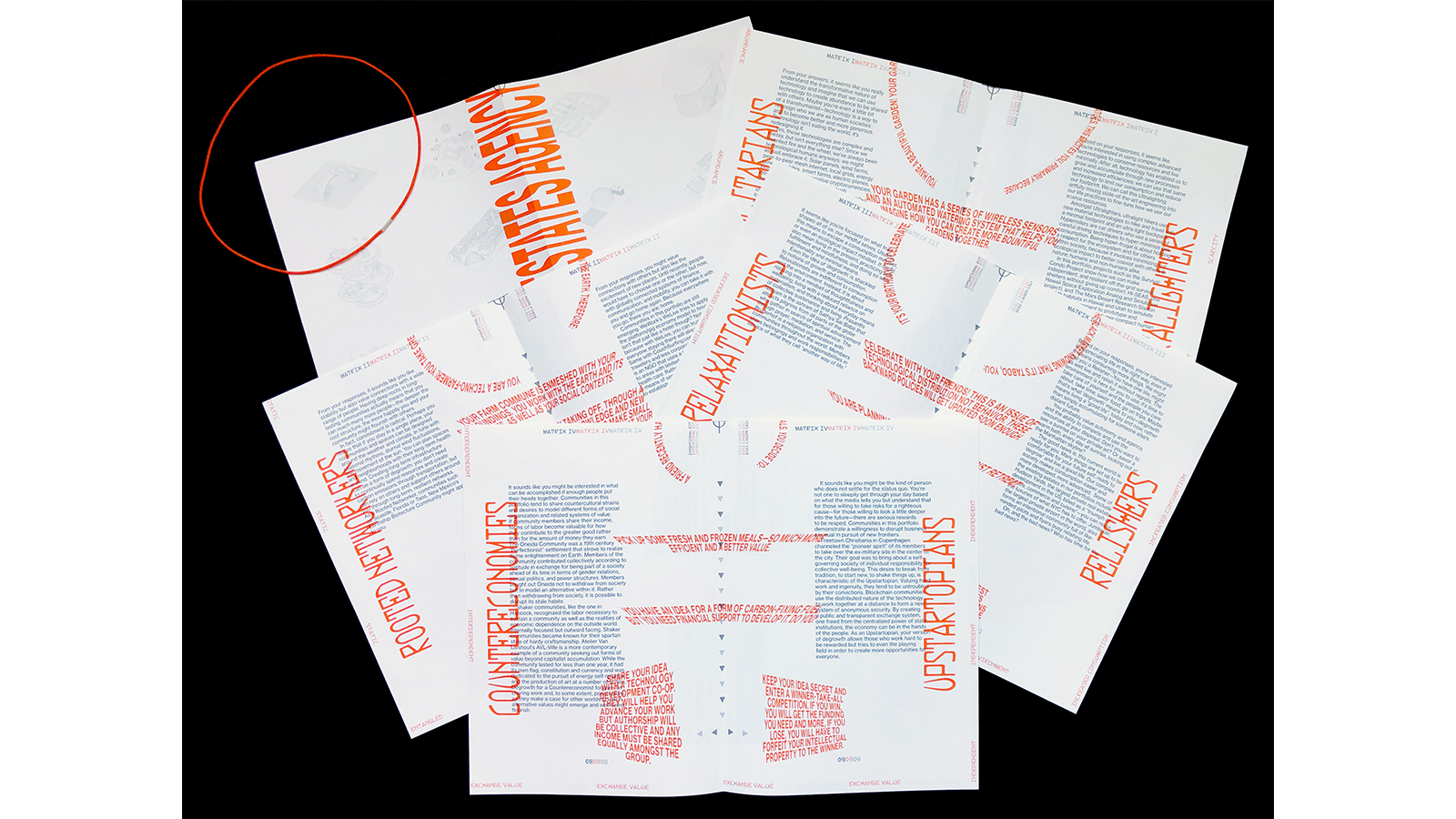
intentional estates agency
show text
2018, Oslo Architecture Triennale, "Enough: The Architecture of Degrowth"
Client: Oslo Architecture Triennale
Team: Tei Carpenter, Jesse LeCavalier, Julia Pyszkowski, Dan Taeyoung, Chris Woebken
Graphic Design: David Knowles and Willis Kingery
The Intentional Estates Agency [IEA] adopts and modifies the mechanisms of desire and commodity logic of a real estate agency to engage issues of degrowth. Designed as an interactive questionnaire, the brochure prompts participants to discover a portfolio of degrowth options that draw from a range of global historical, contemporary and speculative social experiments. These portfolios foreground communal metrics, platforms for collective sharing, and resource management. The IEA supports the need to locate alternative pathways out of a paradigm of limitless growth and expand an empirical understanding of how design can support new forms of society and value systems. It is available at
Printed Matter.

intentional estates agency
show text
2018, Oslo Architecture Triennale, "Enough: The Architecture of Degrowth"
Client: Oslo Architecture Triennale
Team: Tei Carpenter, Jesse LeCavalier, Julia Pyszkowski, Dan Taeyoung, Chris Woebken
Graphic Design: David Knowles and Willis Kingery
The Intentional Estates Agency [IEA] adopts and modifies the mechanisms of desire and commodity logic of a real estate agency to engage issues of degrowth. Designed as an interactive questionnaire, the brochure prompts participants to discover a portfolio of degrowth options that draw from a range of global historical, contemporary and speculative social experiments. These portfolios foreground communal metrics, platforms for collective sharing, and resource management. The IEA supports the need to locate alternative pathways out of a paradigm of limitless growth and expand an empirical understanding of how design can support new forms of society and value systems. It is available at
Printed Matter.
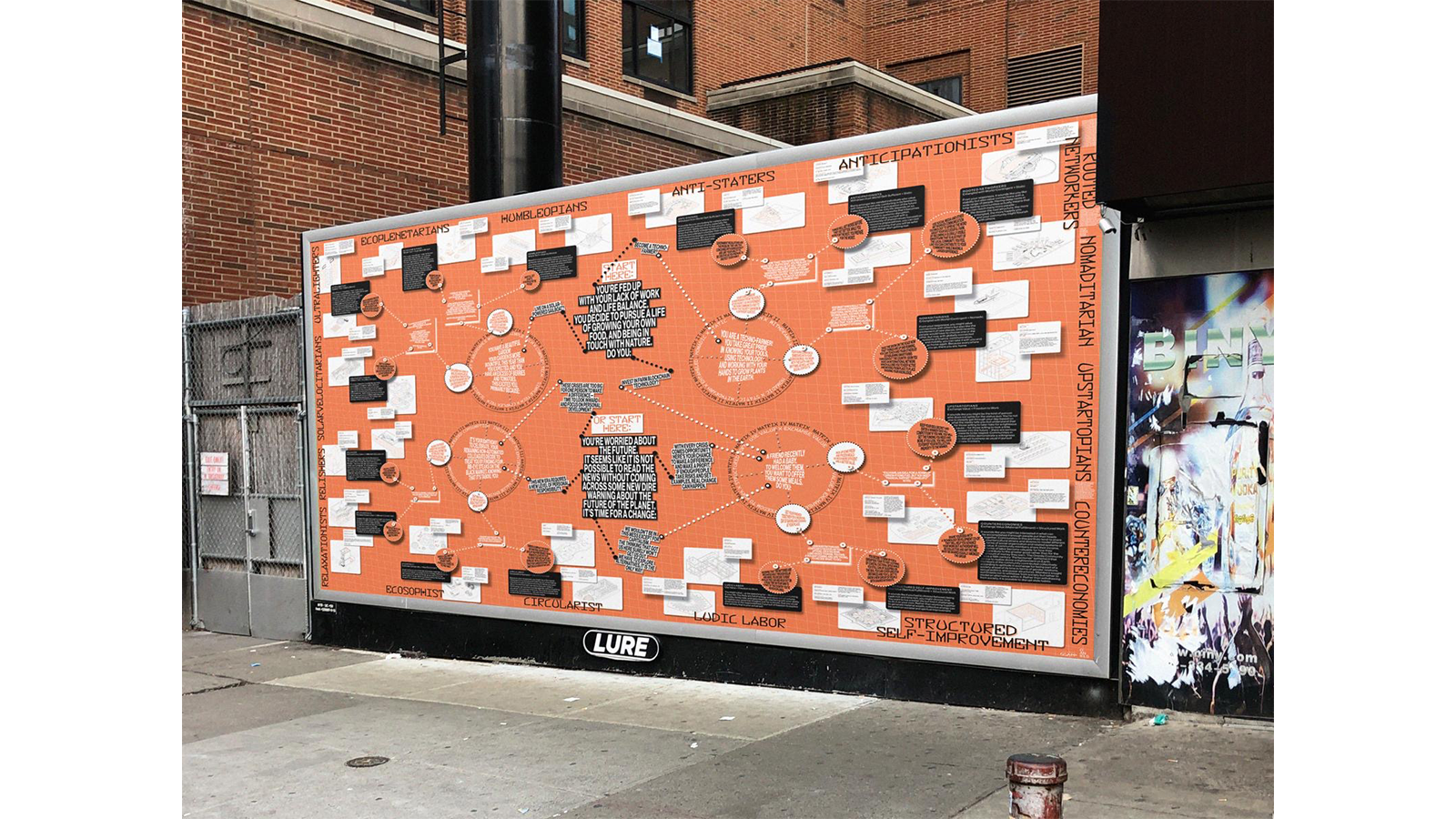
intentional estates agency
show text
2018, Oslo Architecture Triennale, "Enough: The Architecture of Degrowth"
Client: Oslo Architecture Triennale
Team: Tei Carpenter, Jesse LeCavalier, Julia Pyszkowski, Dan Taeyoung, Chris Woebken
Graphic Design: David Knowles and Willis Kingery
The Intentional Estates Agency [IEA] adopts and modifies the mechanisms of desire and commodity logic of a real estate agency to engage issues of degrowth. Designed as an interactive questionnaire, the brochure prompts participants to discover a portfolio of degrowth options that draw from a range of global historical, contemporary and speculative social experiments. These portfolios foreground communal metrics, platforms for collective sharing, and resource management. The IEA supports the need to locate alternative pathways out of a paradigm of limitless growth and expand an empirical understanding of how design can support new forms of society and value systems. It is available at
Printed Matter.

flatiron crossings
show text
New York, New York, USA
2018, Competition Finalist
Client: Van Alen Institute and Flatiron/23rd Street Partnership
Team: Tei Carpenter, Arianna Deane, Minjae Kim, Ashely Kuo
A finalist for a holiday installation in Manhattan’s Madison Square Park, Flatiron Crossings re-forms New York City’s language of small-scale traffic management infrastructure—crosswalks, delineators, speed bumps, and channelizers—to create an immersive, animated and luminous field that encourages congestion and public interaction. As a literal “crossing” that engages the public as a space of rest, discovery and interaction, the project takes a cue from the site’s iconic intersection of Fifth Avenue and Broadway. A grid of internally illuminated, gently flexing poles are finished with retroreflective paint to produce a glowing, glittering experience with the interplay of people, headlights and phone flashes.

flatiron crossings
show text
New York, New York, USA
2018, Competition Finalist
Client: Van Alen Institute and Flatiron/23rd Street Partnership
Team: Tei Carpenter, Arianna Deane, Minjae Kim, Ashely Kuo
A finalist for a holiday installation in Manhattan’s Madison Square Park, Flatiron Crossings re-forms New York City’s language of small-scale traffic management infrastructure—crosswalks, delineators, speed bumps, and channelizers—to create an immersive, animated and luminous field that encourages congestion and public interaction. As a literal “crossing” that engages the public as a space of rest, discovery and interaction, the project takes a cue from the site’s iconic intersection of Fifth Avenue and Broadway. A grid of internally illuminated, gently flexing poles are finished with retroreflective paint to produce a glowing, glittering experience with the interplay of people, headlights and phone flashes.
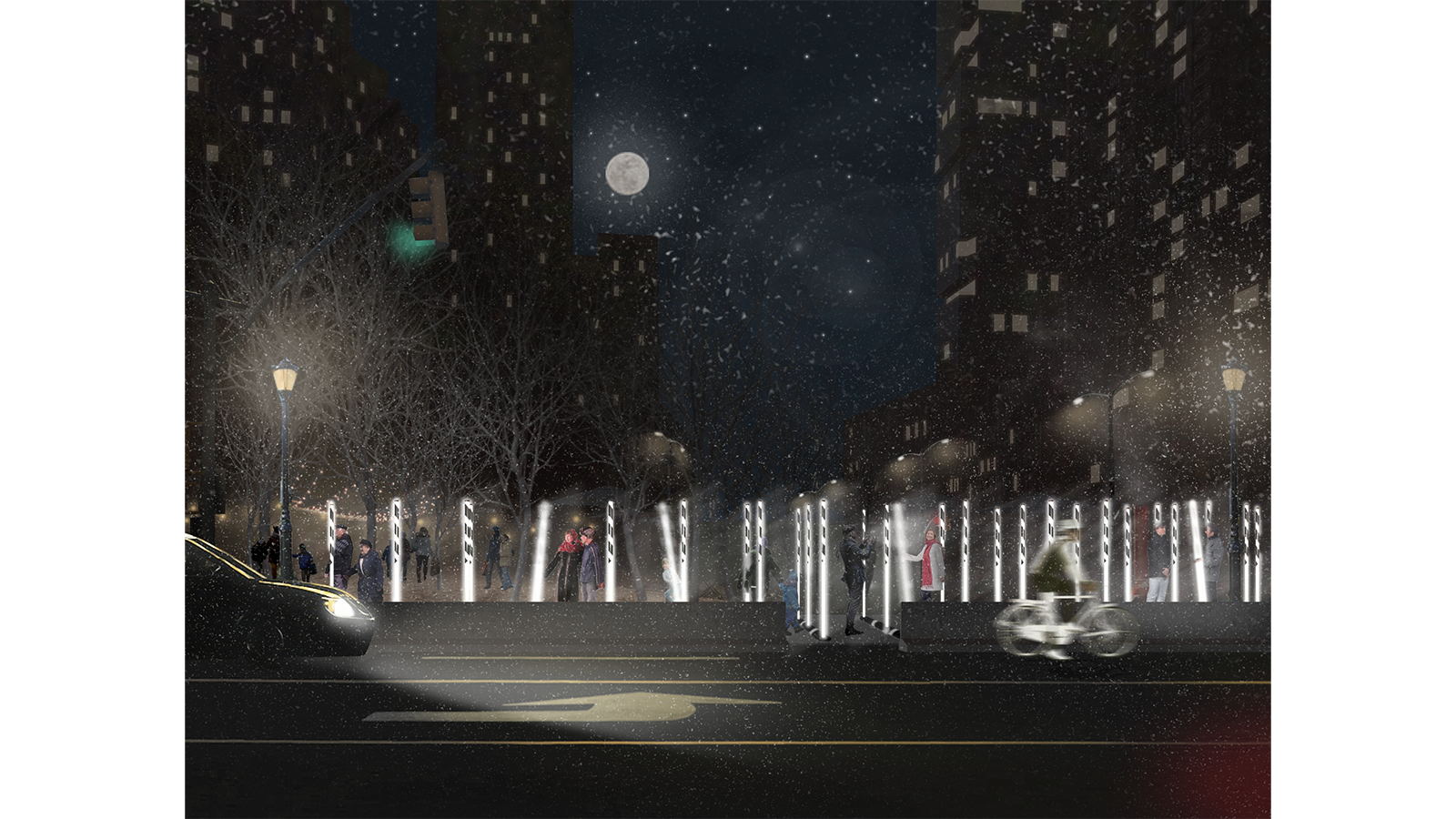
flatiron crossings
show text
New York, New York, USA
2018, Competition Finalist
Client: Van Alen Institute and Flatiron/23rd Street Partnership
Team: Tei Carpenter, Arianna Deane, Minjae Kim, Ashely Kuo
A finalist for a holiday installation in Manhattan’s Madison Square Park, Flatiron Crossings re-forms New York City’s language of small-scale traffic management infrastructure—crosswalks, delineators, speed bumps, and channelizers—to create an immersive, animated and luminous field that encourages congestion and public interaction. As a literal “crossing” that engages the public as a space of rest, discovery and interaction, the project takes a cue from the site’s iconic intersection of Fifth Avenue and Broadway. A grid of internally illuminated, gently flexing poles are finished with retroreflective paint to produce a glowing, glittering experience with the interplay of people, headlights and phone flashes.
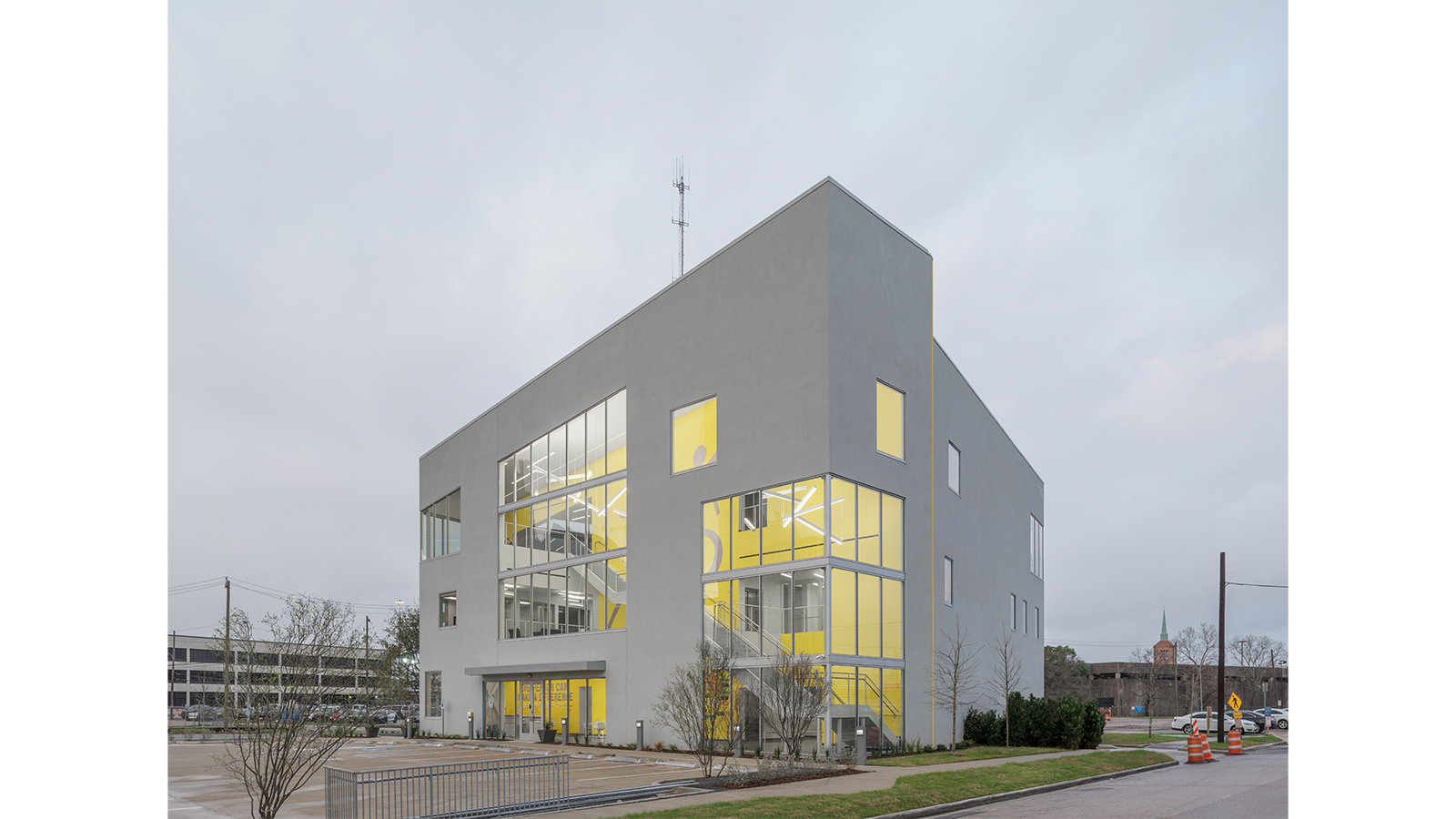
big brothers big sisters lone star
show text
Houston, Texas, USA.
2014—2018, Built
Team: Tei Carpenter, Min Chen, George Hewitt, Adelina Koleva, Nora Leon, Elizabeth Stanfel.
Photography: © Michael Vahrenwald
A new 20,000 sf headquarters for national non-profit mentoring organization Big Brothers Big Sisters located in downtown Houston. Manipulation of color and standard building systems allows for increased visibility of the organization through a dynamic faciality on the exterior and creates openness with a three-story atrium at the entry. Within the context of Houston’s car-centric culture, the building is designed to be experienced at a range of scales and speeds.
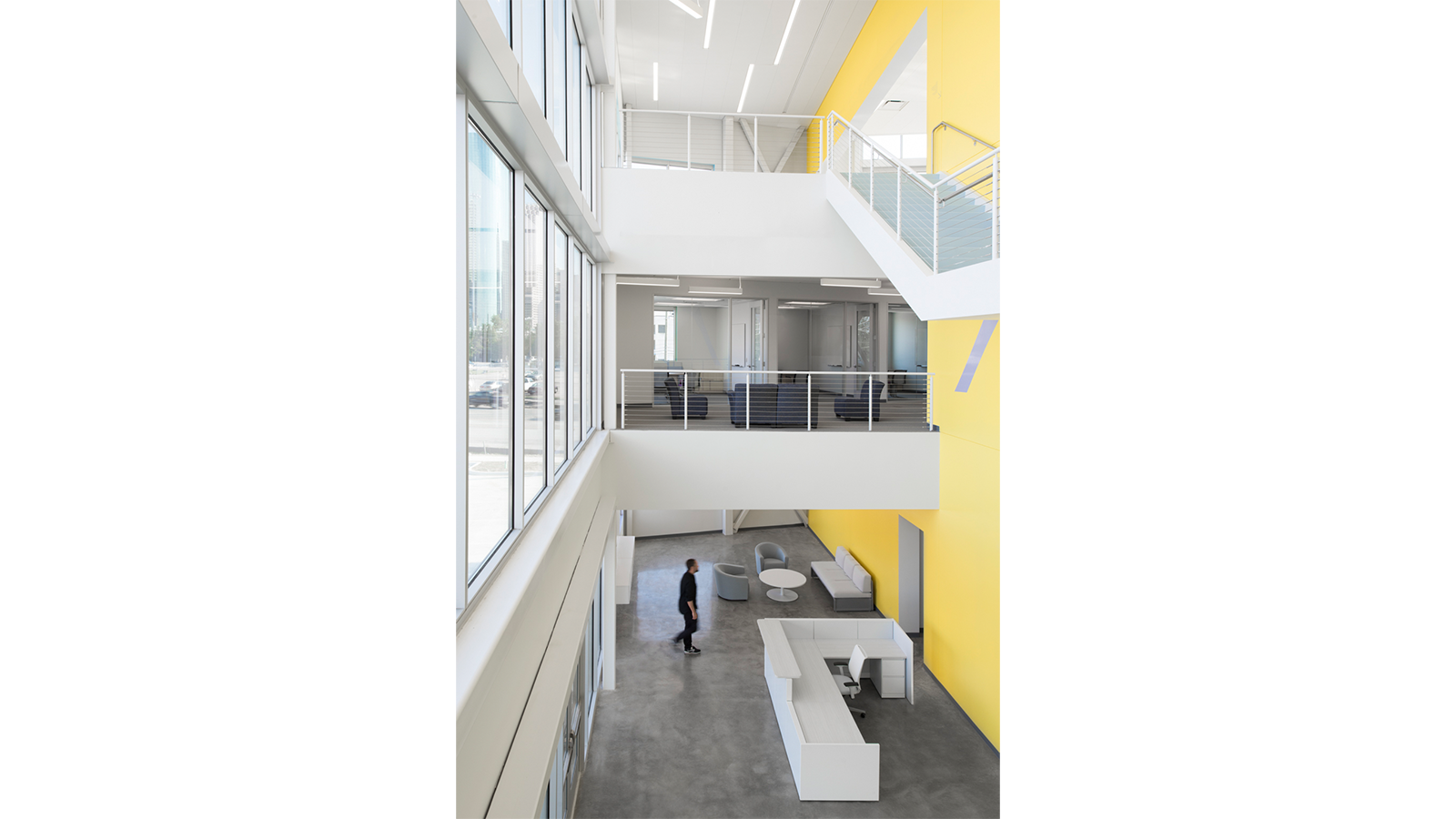
big brothers big sisters lone star
show text
Houston, Texas, USA.
2014—2018, Built
Team: Tei Carpenter, Min Chen, George Hewitt, Adelina Koleva, Nora Leon, Elizabeth Stanfel.
Photography: © Michael Vahrenwald
A new 20,000 sf headquarters for national non-profit mentoring organization Big Brothers Big Sisters located in downtown Houston. Manipulation of color and standard building systems allows for increased visibility of the organization through a dynamic faciality on the exterior and creates openness with a three-story atrium at the entry. Within the context of Houston’s car-centric culture, the building is designed to be experienced at a range of scales and speeds.
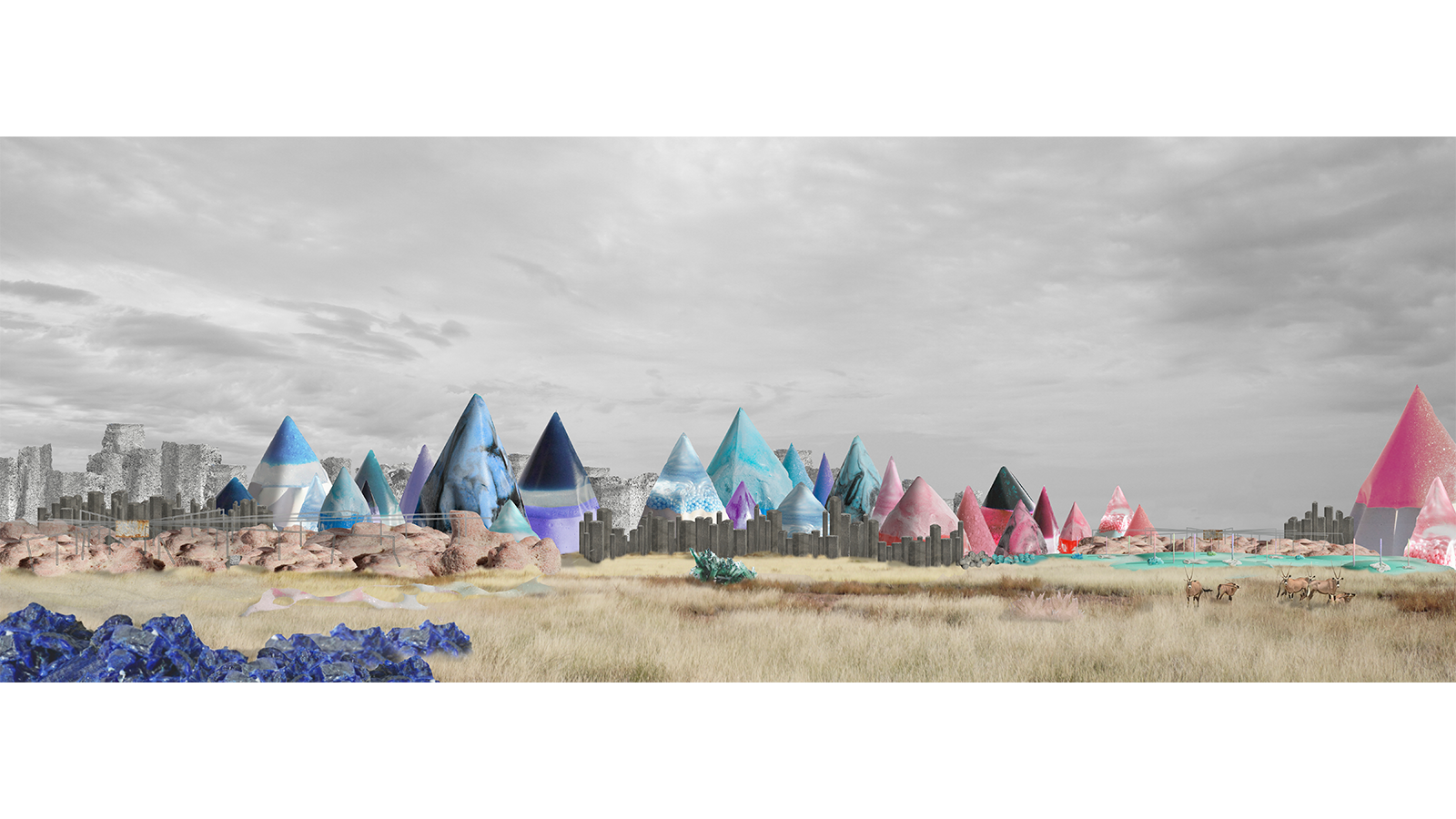
Carlsbad, New Mexico
2017, Competition Winner
Team: Tei Carpenter, Arianna Deane, Ashely Kuo.
Testbed speculates on the legacy of nuclear waste in the United States and its immense active life time of 10,000 years using a phase-based process that enlists naturally occurring elements to propose a carbon sequestration experimentation site as a marker system for the existing nuclear waste isolation pilot plant. It is the First Prize winner of Arch Out Loud’s “Nuclear” international competition to design a marker system to deter inadvertent human intrusion into the Nuclear Waste Isolation Pilot Plant in New Mexico.
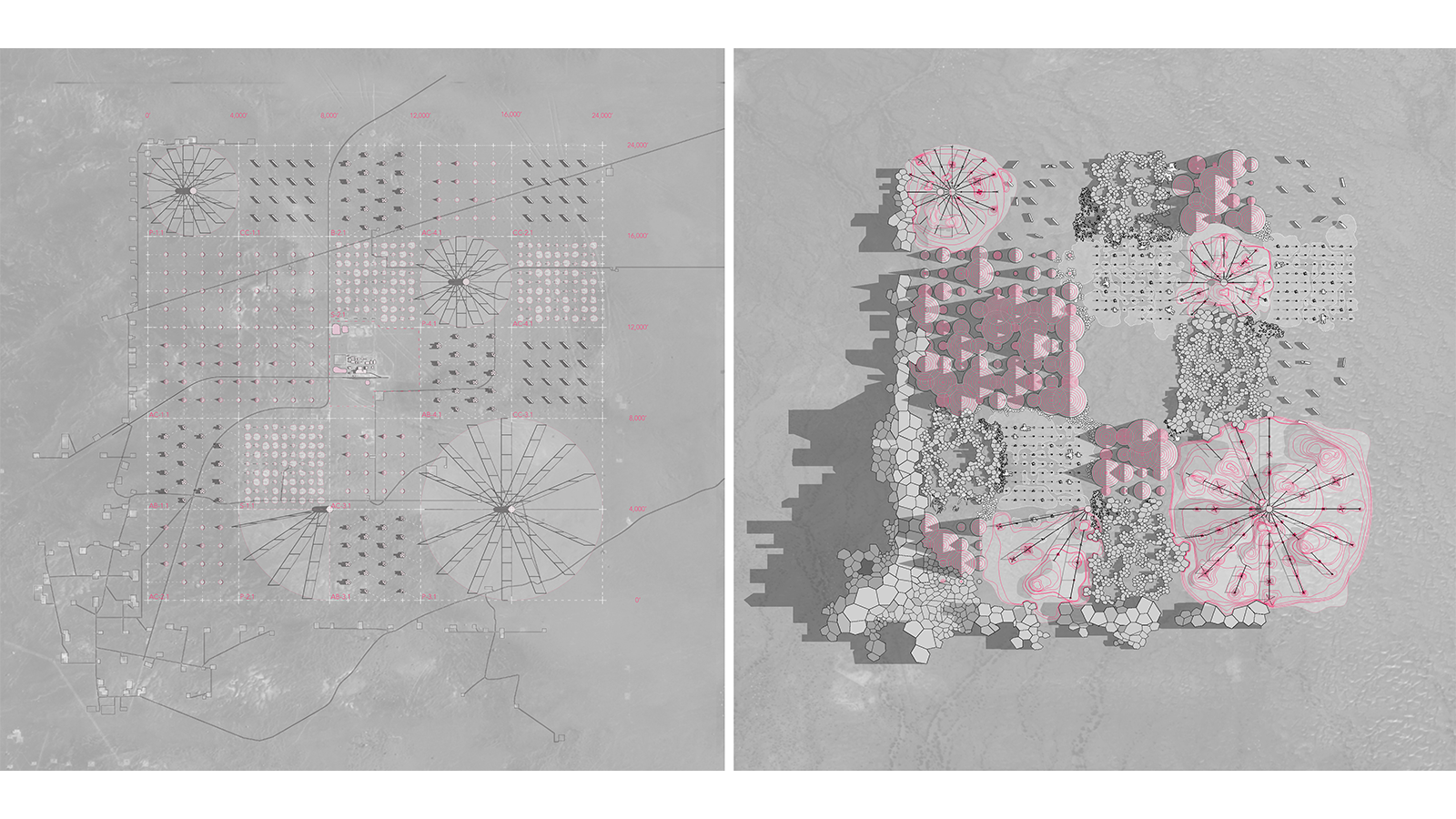
Carlsbad, New Mexico
2017, Competition Winner
Team: Tei Carpenter, Arianna Deane, Ashely Kuo.
Testbed speculates on the legacy of nuclear waste in the United States and its immense active life time of 10,000 years using a phase-based process that enlists naturally occurring elements to propose a carbon sequestration experimentation site as a marker system for the existing nuclear waste isolation pilot plant. It is the First Prize winner of Arch Out Loud’s “Nuclear” international competition to design a marker system to deter inadvertent human intrusion into the Nuclear Waste Isolation Pilot Plant in New Mexico.
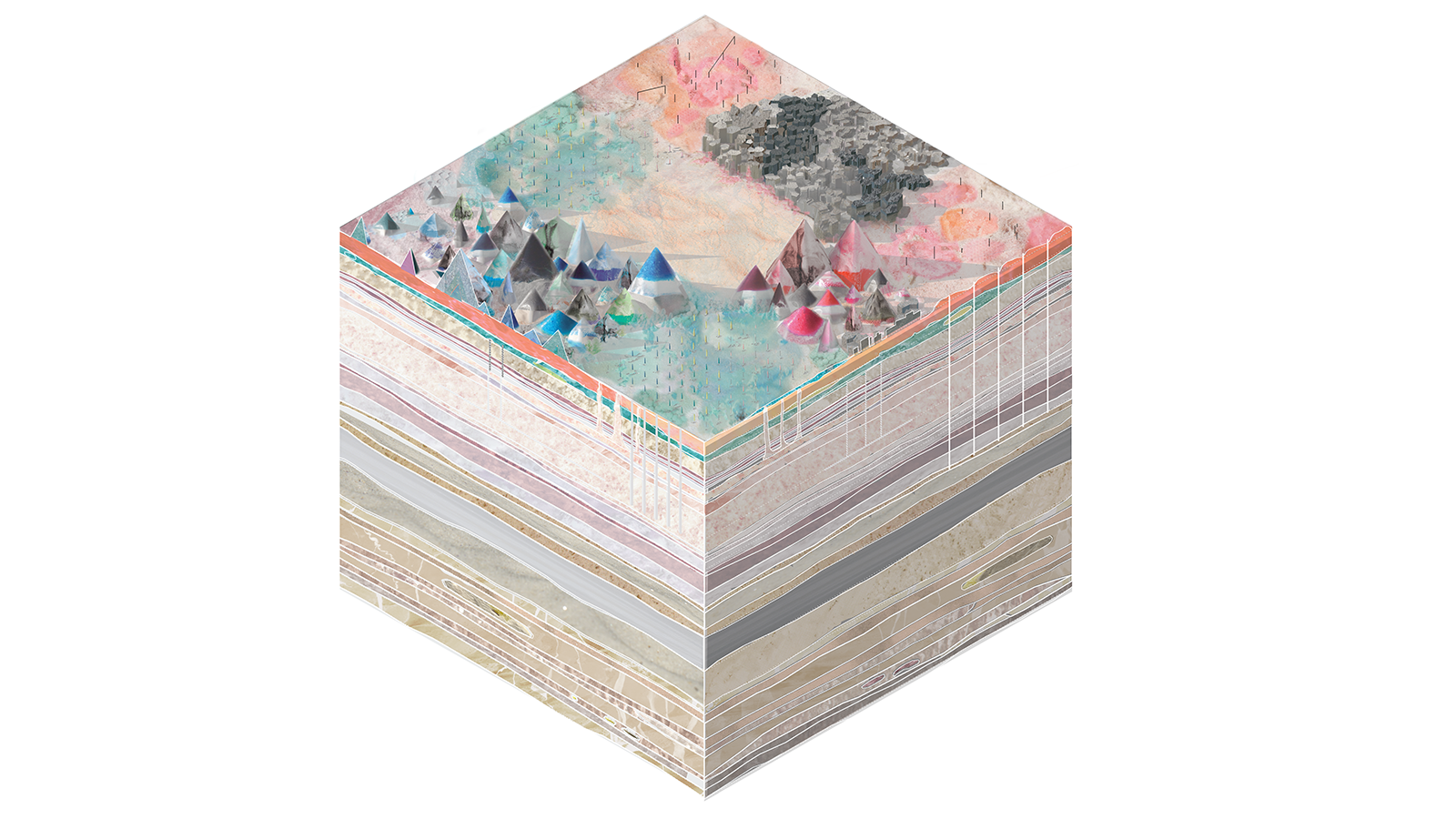
Carlsbad, New Mexico
2017, Competition Winner
Team: Tei Carpenter, Arianna Deane, Ashely Kuo.
Testbed speculates on the legacy of nuclear waste in the United States and its immense active life time of 10,000 years using a phase-based process that enlists naturally occurring elements to propose a carbon sequestration experimentation site as a marker system for the existing nuclear waste isolation pilot plant. It is the First Prize winner of Arch Out Loud’s “Nuclear” international competition to design a marker system to deter inadvertent human intrusion into the Nuclear Waste Isolation Pilot Plant in New Mexico.































